Architects: Want to have your project featured? Showcase your work through Architizer and sign up for our inspirational newsletters.
Tokyo, a city renowned for its harmonious blend of ancient tradition and cutting-edge modernity, is undergoing a transformation that promises to redefine urban living in the 21st century. In the face of population changes, climate challenges and ever-evolving technology, Tokyo’s architects and urban planners are spearheading a renaissance of design innovation. This shift not only seeks to meet the demands of the present but also to anticipate the needs of a future marked by sustainability, resilience and human-centric design.
Tokyo’s urban evolution offers a glimpse into the future of global cities. At the heart of this transformation lies a commitment to blending the city’s rich cultural heritage with forward-thinking design. Architects are drawing on traditional Japanese principles — like an emphasis on natural materials and continuous indoor-outdoor connections — while incorporating advanced technologies that address contemporary urban challenges. Projects such as greener towers, climate-adaptive developments, and integrated transit hubs showcase how Tokyo is navigating the complexities of density, sustainability, and connectivity. These bold endeavors reflect a deep respect for the city’s past while embracing a vision for an adaptable, inclusive future. Join us as we journey through the architectural vision propelling Tokyo into a new era, where the interplay of tradition and innovation creates a model for the cities of tomorrow.
Azabudai Hills
By Heatherwick Studio, Tokyo, Japan
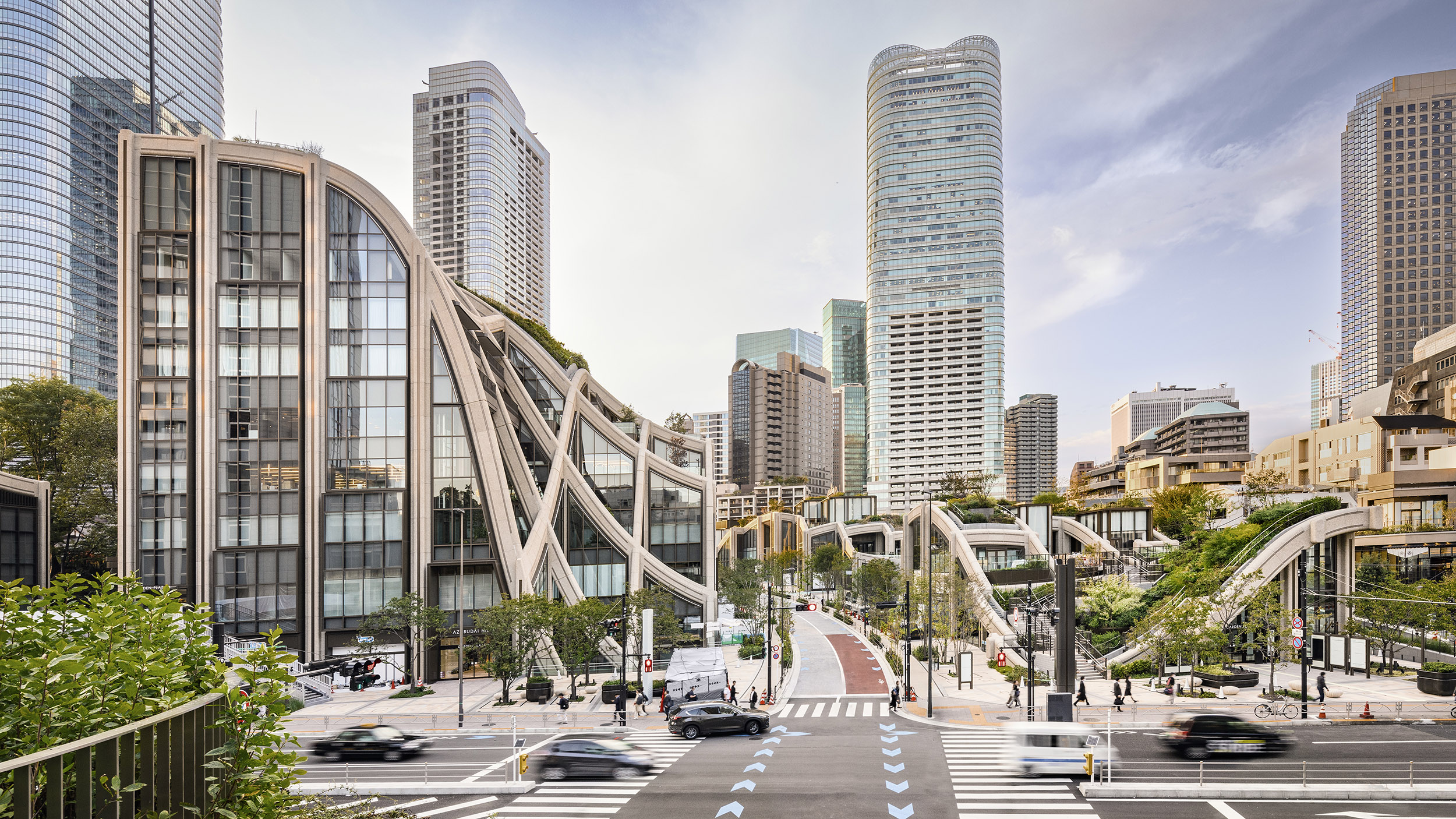
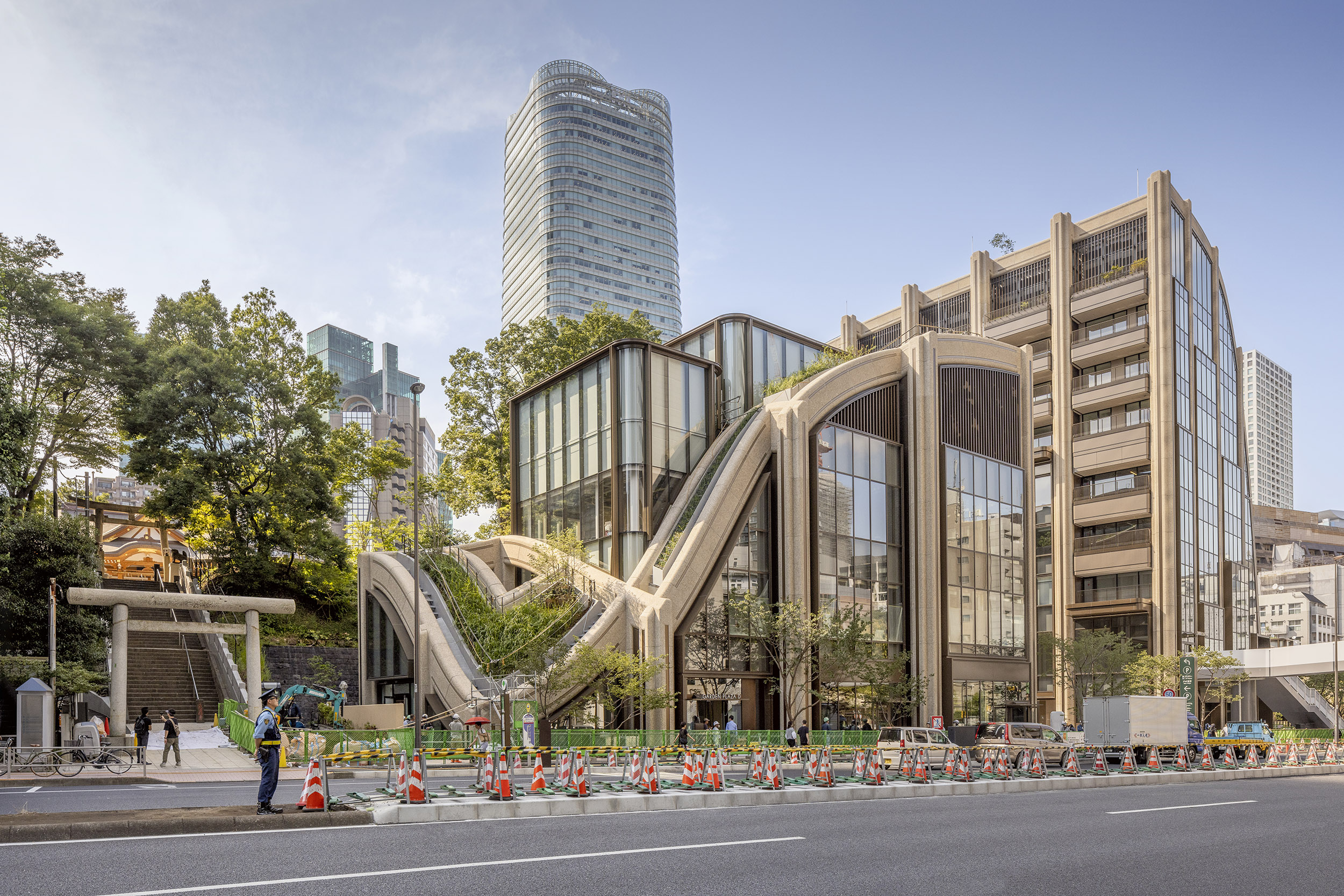 Azabudai Hills is a vibrant new district in central Tokyo that seamlessly blends residential, commercial, and cultural spaces within 2.4 hectares of publicly accessible green landscape. Designed to celebrate Tokyo’s juxtaposition of old and new, the project harmonizes diverse elements — including residential towers, retail, a school, temples, art galleries, offices and restaurants — into a cohesive urban environment.
Azabudai Hills is a vibrant new district in central Tokyo that seamlessly blends residential, commercial, and cultural spaces within 2.4 hectares of publicly accessible green landscape. Designed to celebrate Tokyo’s juxtaposition of old and new, the project harmonizes diverse elements — including residential towers, retail, a school, temples, art galleries, offices and restaurants — into a cohesive urban environment.
A pergola-like structure unifies the irregular site, creating lush greenery at ground level and on rooftop slopes, inviting exploration and fostering informal connections. Echoing its valley setting, the design incorporates sloping forms and natural materials, while references to traditional Japanese crafts, like Edo Kiriko glass etching, capture the city’s essence.
Ekoin Nenbutsudo
By Yutaka Kawahara Design Studio, Tokyo, Japan
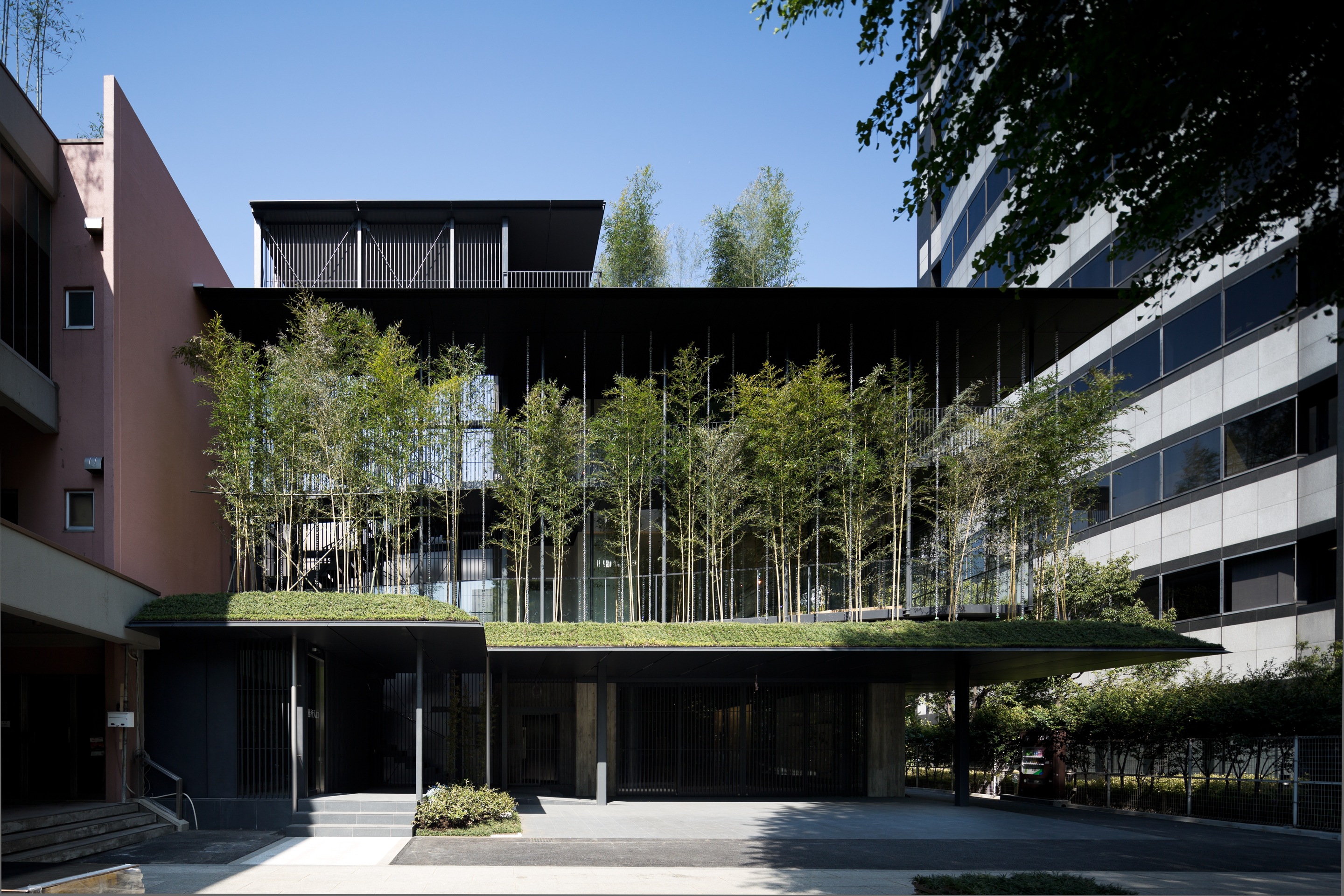
 This innovative temple in central Tokyo reimagines traditional design by stacking three distinct types of temple buildings on a compact site, connected by an outer corridor inspired by classical temple layouts. The design integrates a bamboo forest, blending live greenery with 108 Swarovski crystal bamboos that shimmer in seven colors, symbolizing a Buddhist rosary and evoking the “gokuraku” paradise. This serene feature not only buffers the temple from the bustling city but also provides an urban oasis, allowing visitors to momentarily forget they are in the heart of Tokyo. The project seamlessly fuses tradition and modernity, creating a unique spiritual retreat deeply connected to its urban surroundings.
This innovative temple in central Tokyo reimagines traditional design by stacking three distinct types of temple buildings on a compact site, connected by an outer corridor inspired by classical temple layouts. The design integrates a bamboo forest, blending live greenery with 108 Swarovski crystal bamboos that shimmer in seven colors, symbolizing a Buddhist rosary and evoking the “gokuraku” paradise. This serene feature not only buffers the temple from the bustling city but also provides an urban oasis, allowing visitors to momentarily forget they are in the heart of Tokyo. The project seamlessly fuses tradition and modernity, creating a unique spiritual retreat deeply connected to its urban surroundings.
Athletes’ Village Plaza
By NIKKEN SEKKEI LTD, Tokyo, Japan
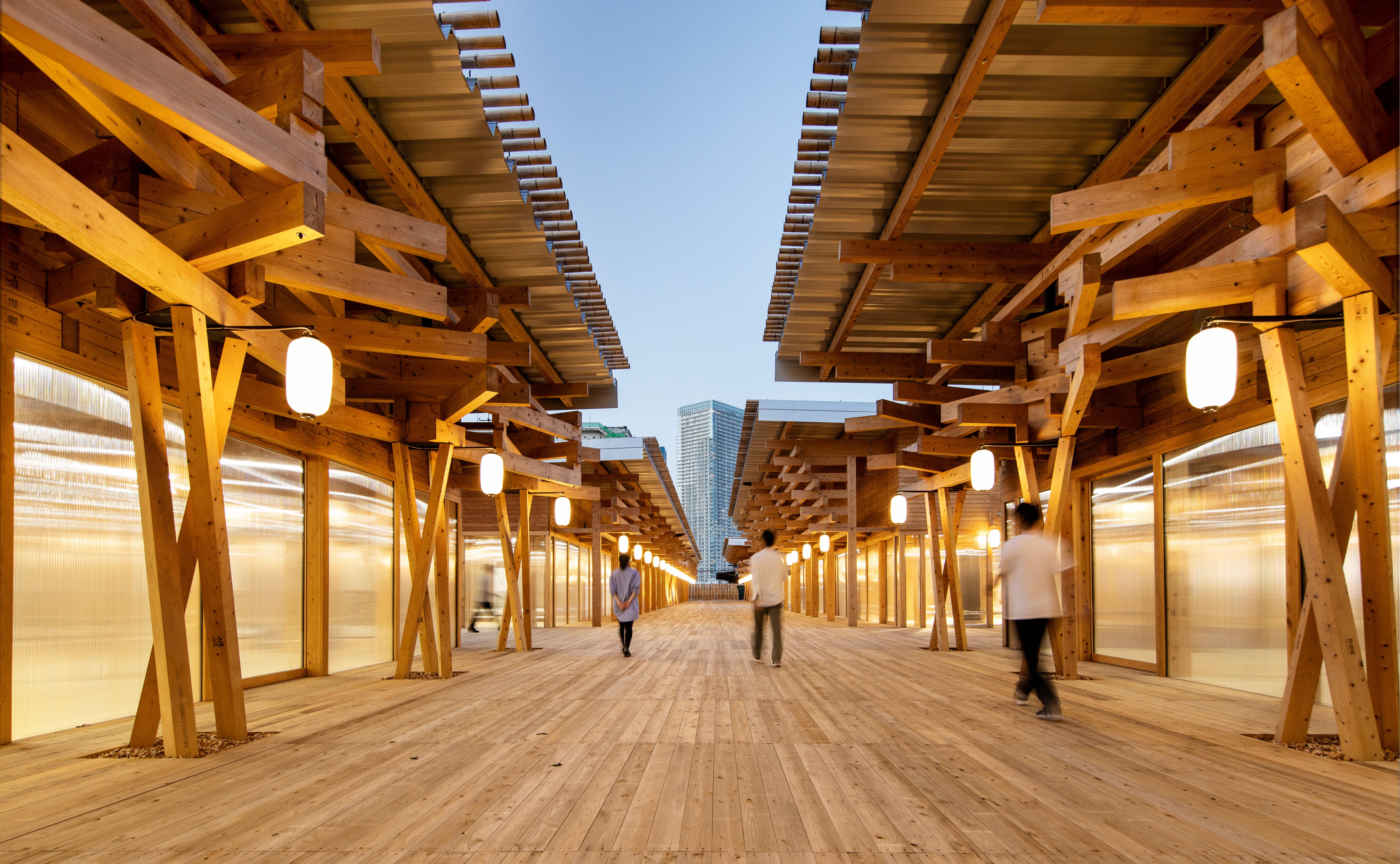
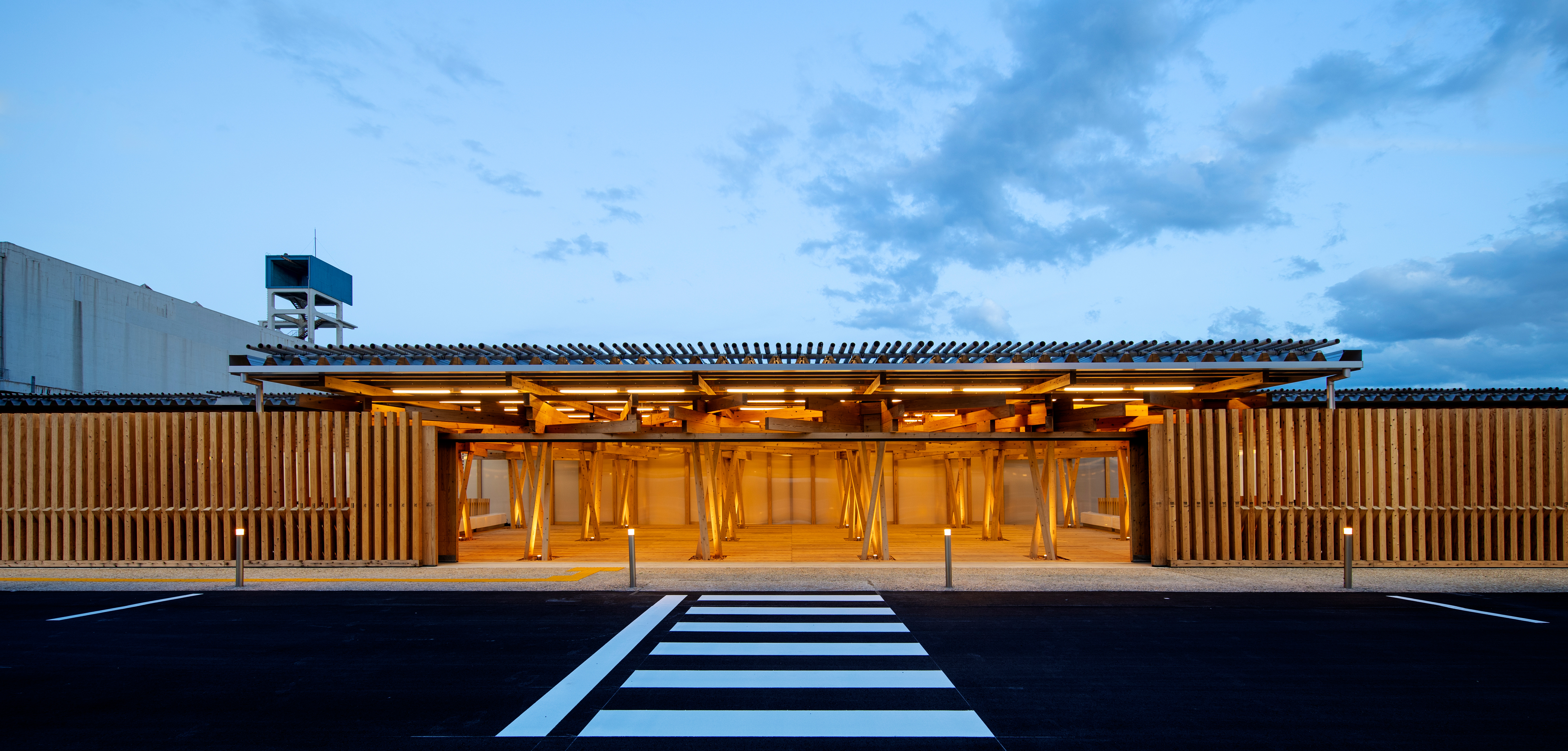
 The Athletes’ Village Plaza, constructed as a temporary ceremonial space for the Tokyo 2020 Olympic and Paralympic Games, served as a hub for athletes, media, and guests to interact and celebrate the event. Designed with sustainability and inclusivity in mind, the single-story structure featured locally sourced timber from municipalities across Japan, emphasizing the country’s united support for the Games.
The Athletes’ Village Plaza, constructed as a temporary ceremonial space for the Tokyo 2020 Olympic and Paralympic Games, served as a hub for athletes, media, and guests to interact and celebrate the event. Designed with sustainability and inclusivity in mind, the single-story structure featured locally sourced timber from municipalities across Japan, emphasizing the country’s united support for the Games.
Traditional Japanese architectural elements, such as a street garden and open eaves, connected the building to its surroundings, creating a welcoming and festive atmosphere while allowing canal breezes to flow through. After the Games, the 40,000 pieces of timber, carefully managed using BIM and JAS standards, were returned to their communities for repurposing into public facilities, embodying a legacy of resourcefulness and connection.
House NA
By Sou Fujimoto Architects, Tokyo, Japan
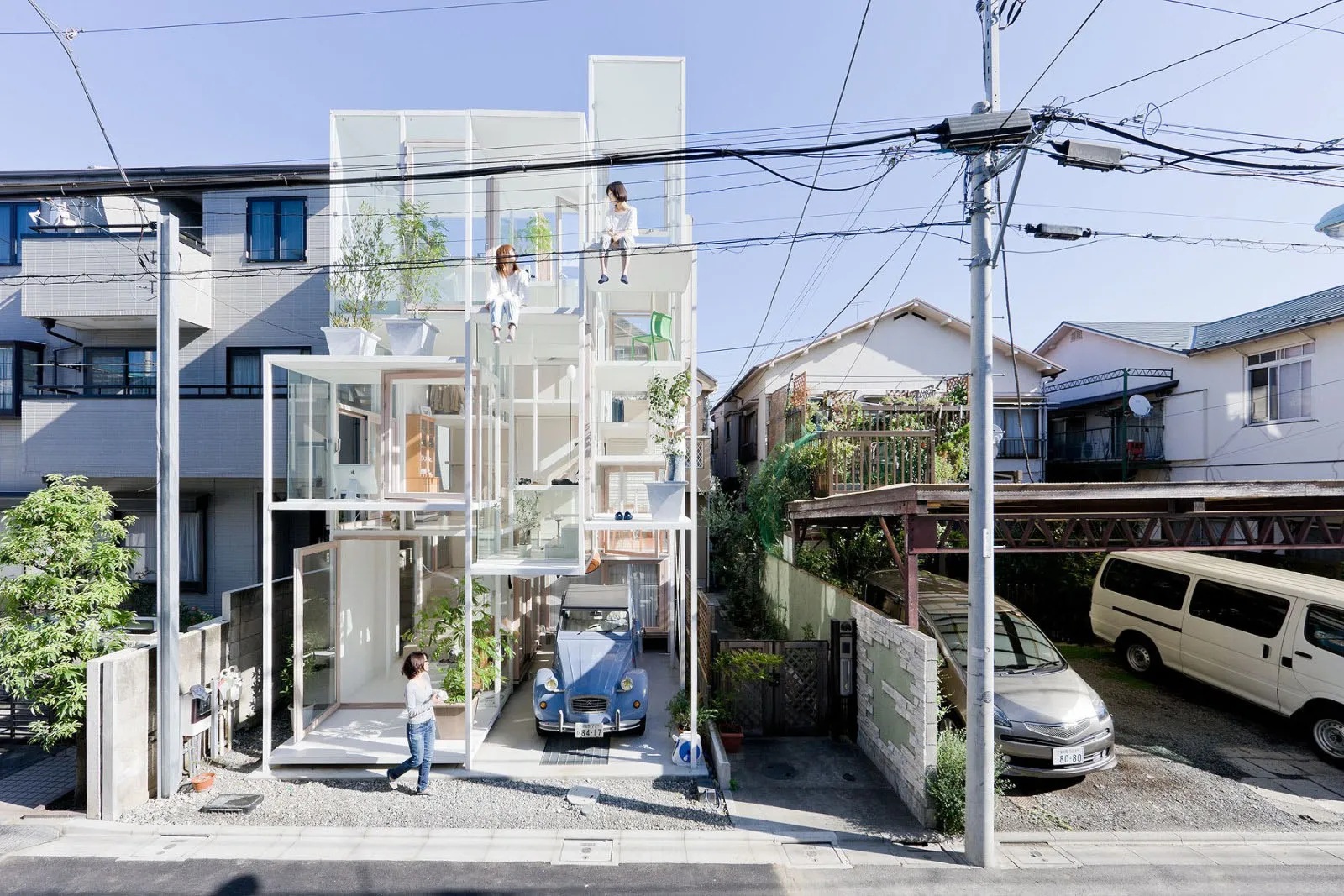
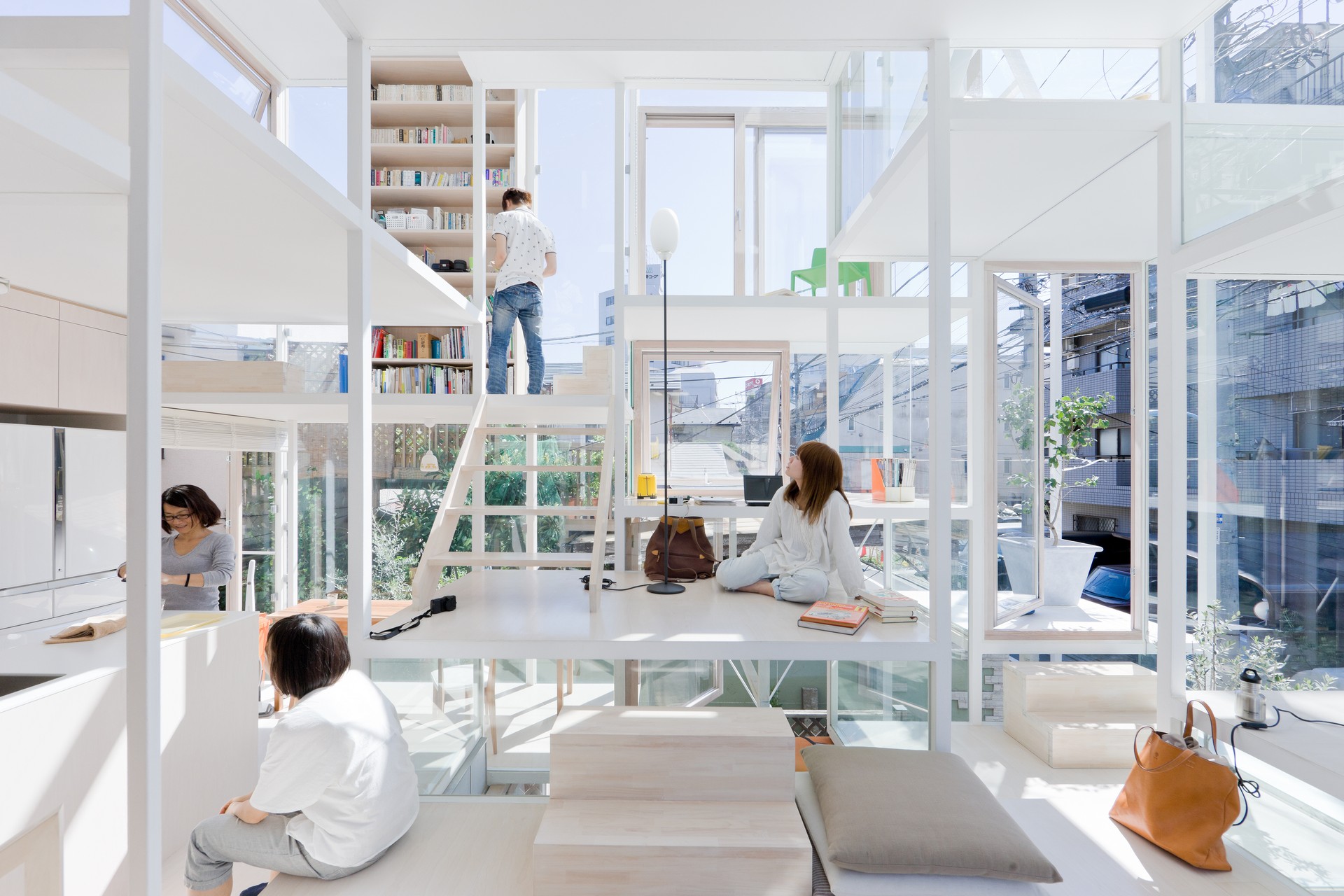 This project reimagines the communal richness of tree-dwelling through a contemporary architectural lens, creating a spatially dense environment where voices and interactions flow seamlessly across levels and spaces. While the white steel-frame structure does not mimic the form of a tree, it aims to embody its essence, fostering connections and discussions akin to life among branches.
This project reimagines the communal richness of tree-dwelling through a contemporary architectural lens, creating a spatially dense environment where voices and interactions flow seamlessly across levels and spaces. While the white steel-frame structure does not mimic the form of a tree, it aims to embody its essence, fostering connections and discussions akin to life among branches.
Positioned between city, architecture, furniture, and the body, the design bridges the natural and the artificial, offering a modern take on contemporary living in the city. It connects to the urban environment by integrating this organic concept into the fabric of city life, encouraging dynamic and layered interactions.
Daiwa Ubiquitous Computing Research Building
By Kengo Kuma and Associates, Tokyo, Japan
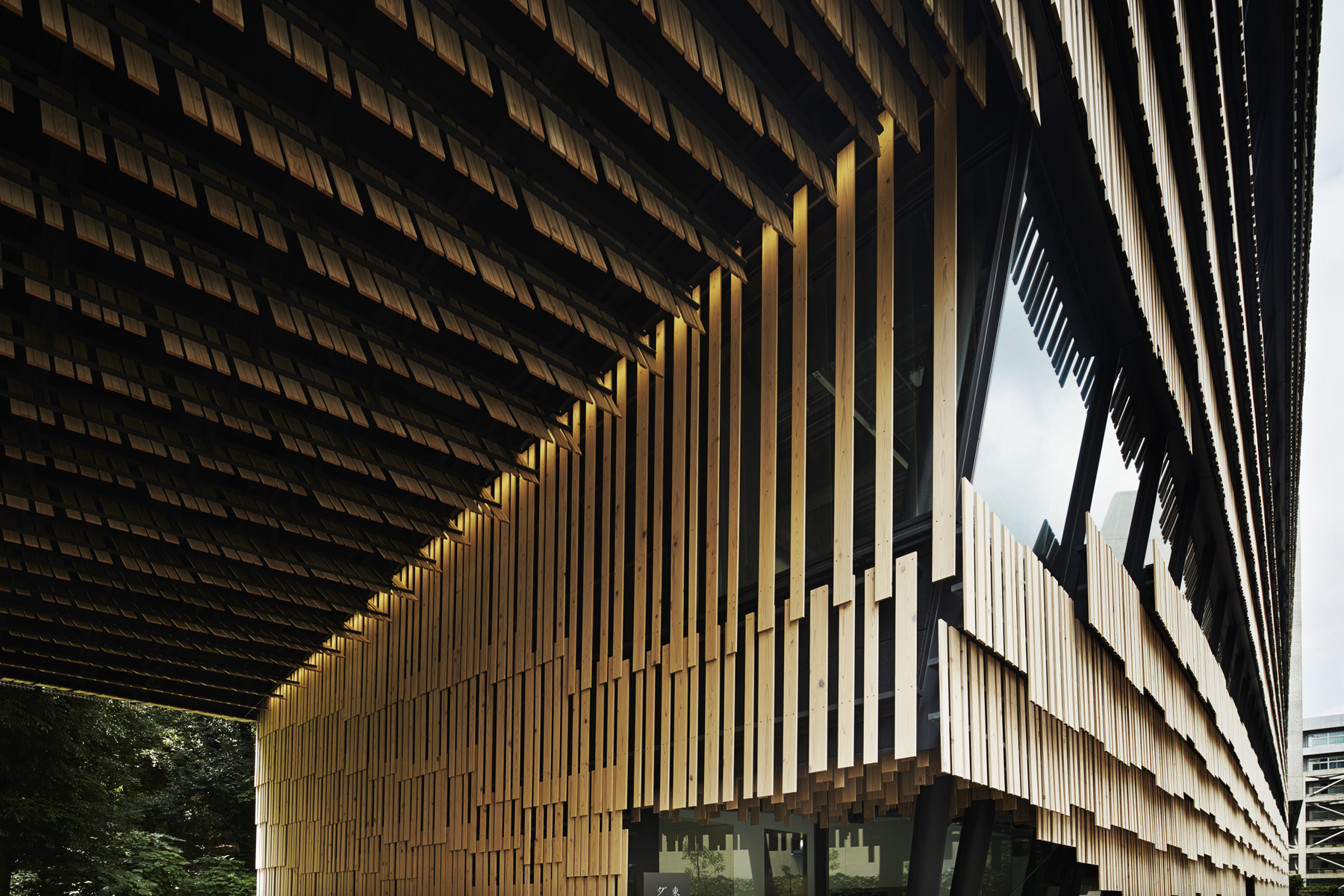
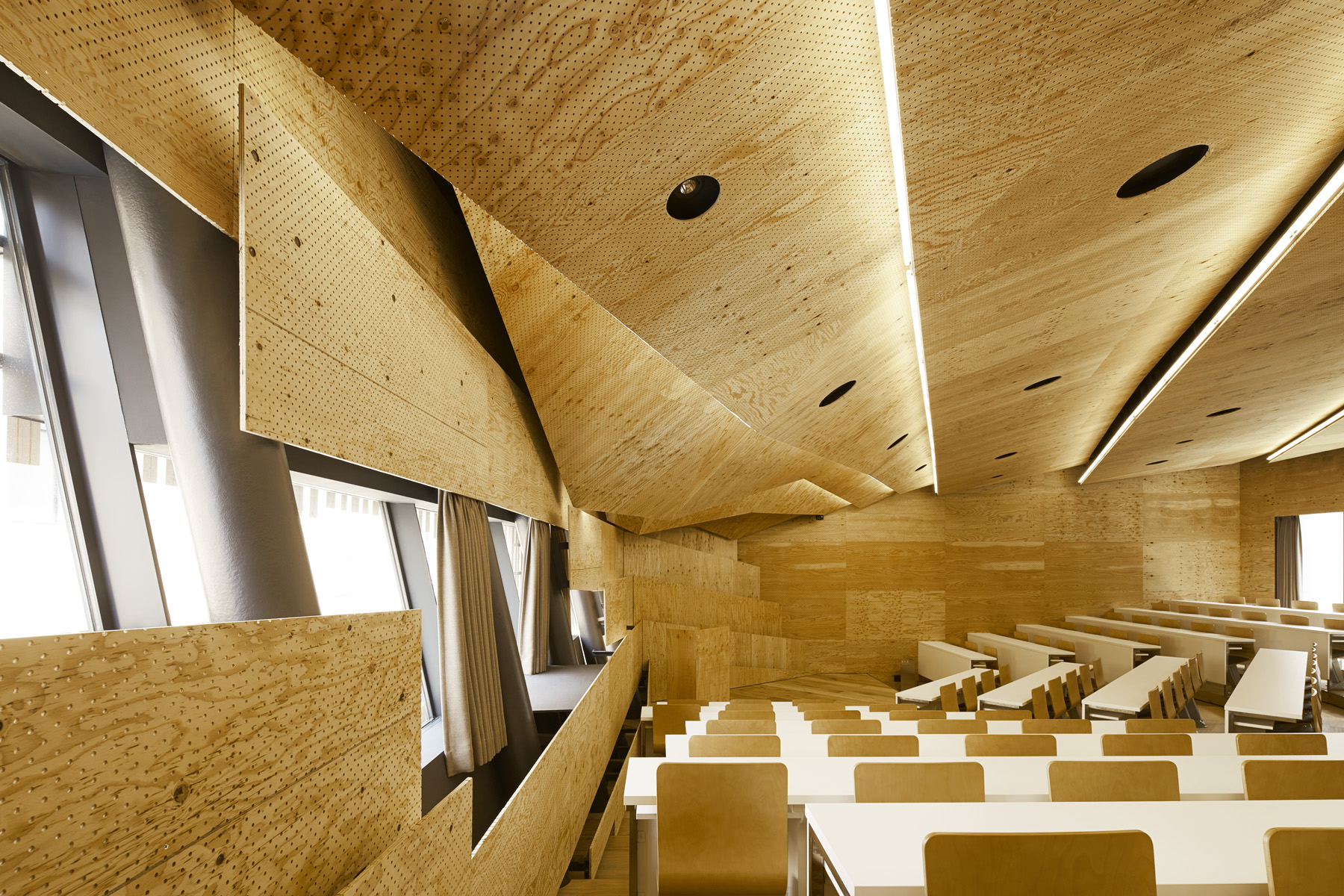
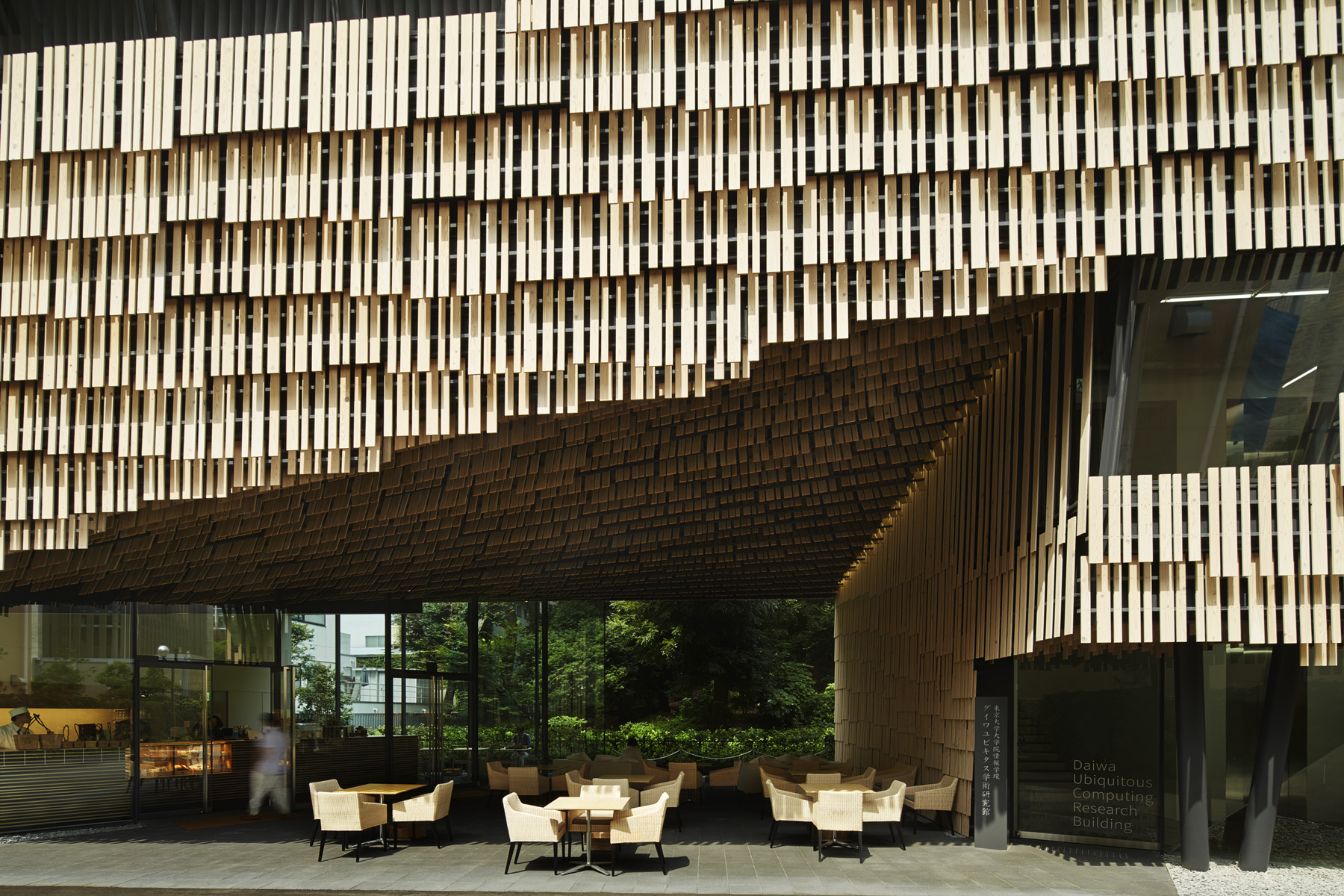 Designed for a university’s research in ubiquitous computing, this building reimagines campus architecture by embracing natural materials like wood and earth over traditional concrete or metal. Its smooth, undulating façade, formed by scalelike panels, creates a soft, organic presence.
Designed for a university’s research in ubiquitous computing, this building reimagines campus architecture by embracing natural materials like wood and earth over traditional concrete or metal. Its smooth, undulating façade, formed by scalelike panels, creates a soft, organic presence.
At its heart, an organ-like aperture covered with a flexible membrane connects the front lane to a serene Japanese garden at the rear, fostering a seamless flow of light and air. This design not only softens the rigid grid of the surrounding campus but also harmonizes the structure with its natural and urban context, offering a refreshing and dynamic addition to the university.
SLIDE Cooperative House
By Komada Architects’ Office, Tokyo, Japan

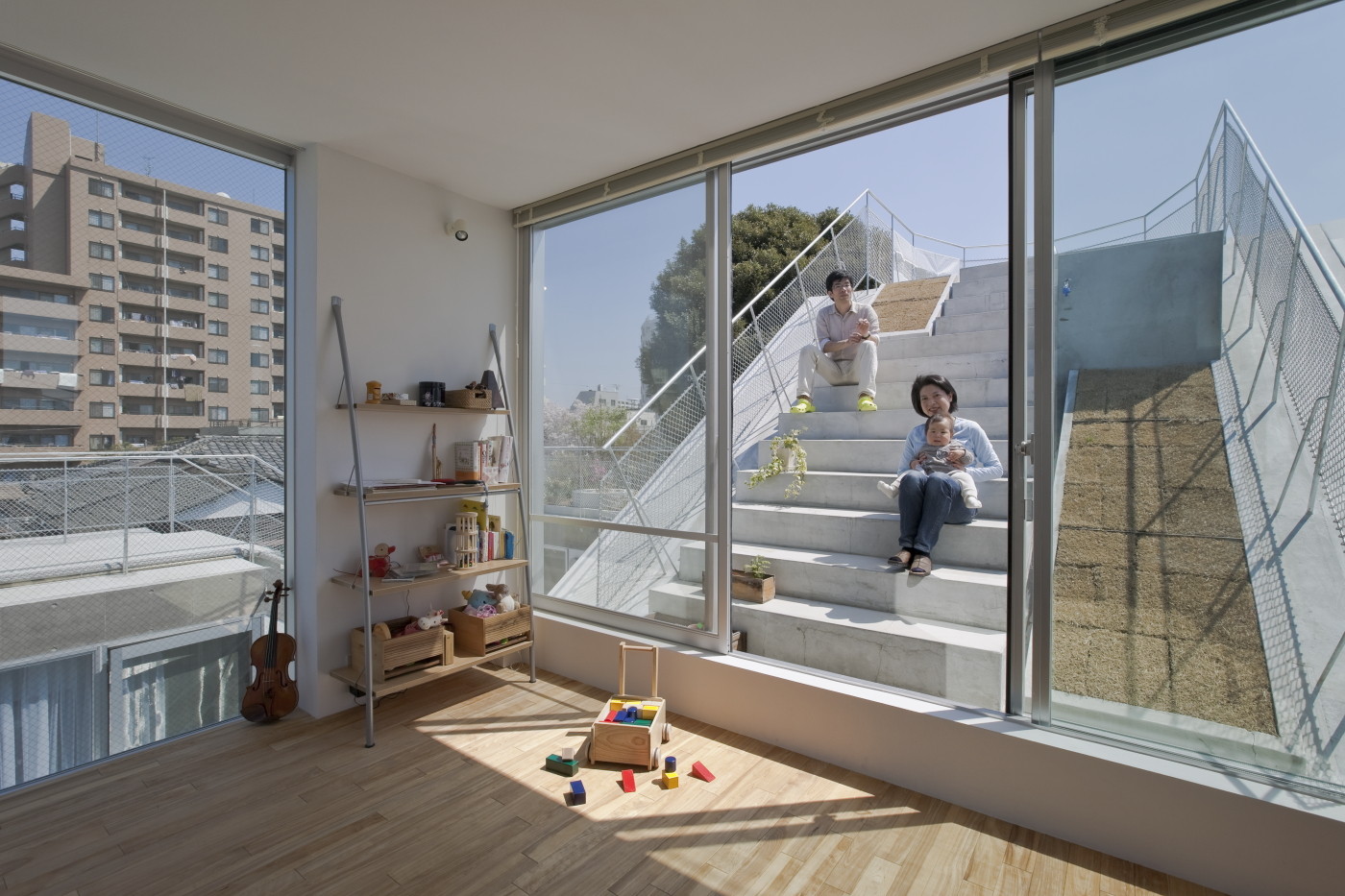
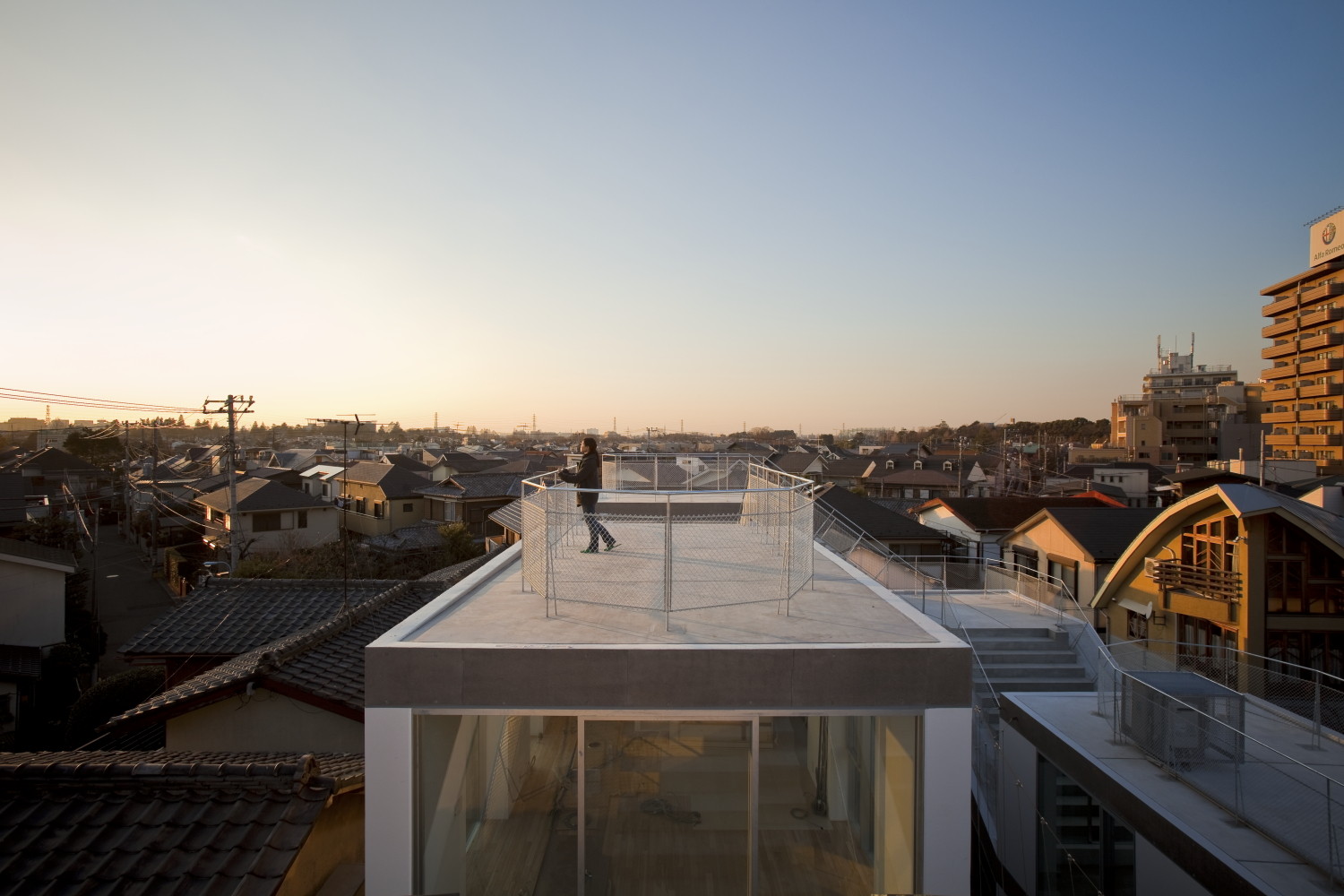 Located in Suginami, Tokyo, Cooperative House centers around a dynamic, elongated courtyard partially enclosed by a spiraling slab surface reminiscent of a large slide. Four of the nine units share access to the courtyard, separated by a green screen, while the other five enjoy private rooftop balconies connected by the continuous slab.
Located in Suginami, Tokyo, Cooperative House centers around a dynamic, elongated courtyard partially enclosed by a spiraling slab surface reminiscent of a large slide. Four of the nine units share access to the courtyard, separated by a green screen, while the other five enjoy private rooftop balconies connected by the continuous slab.
The design emphasizes physical engagement with the space, inviting residents to climb and descend its diagonals, creating a playful, ever-changing living environment. By integrating viewing spaces and fostering interaction, the building effortlessly connects to the surrounding urban fabric.
Himawari Nursery School
By AKAIKE TOHYAMA ARCHITECTS, Tokyo, Japan
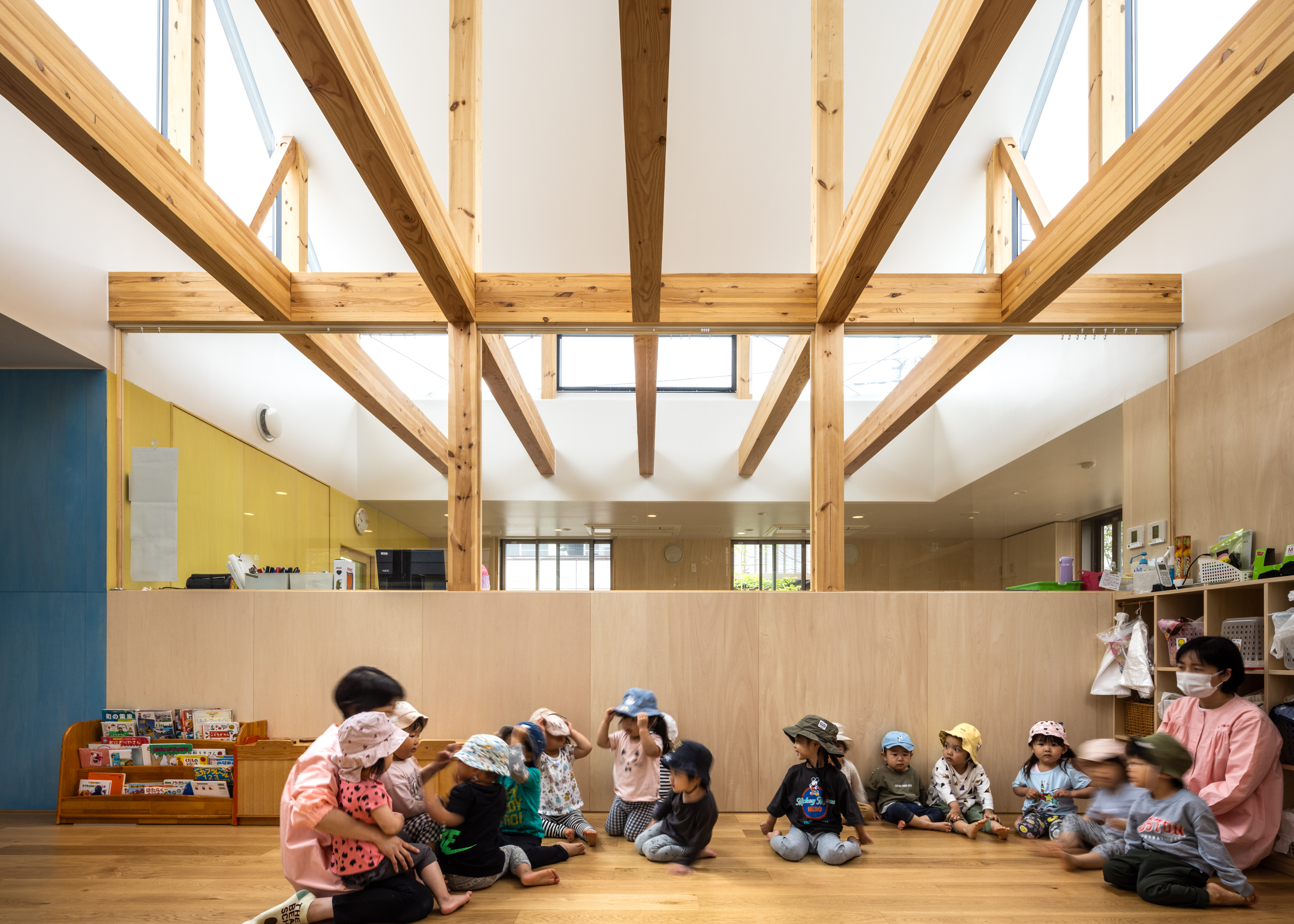

 This nursery school was designed to foster interaction among children of different age groups while blending seamlessly into the residential neighborhood near the Musashino Plateau and Sayama Hills. The one-story wooden structure organizes childcare spaces on the ground floor and staff functions on a compact second floor, encouraging free movement and shared experiences. Small playgrounds are thoughtfully scattered around the site rather than centralized, creating a circulation system that connects indoor and outdoor spaces.
This nursery school was designed to foster interaction among children of different age groups while blending seamlessly into the residential neighborhood near the Musashino Plateau and Sayama Hills. The one-story wooden structure organizes childcare spaces on the ground floor and staff functions on a compact second floor, encouraging free movement and shared experiences. Small playgrounds are thoughtfully scattered around the site rather than centralized, creating a circulation system that connects indoor and outdoor spaces.
Features such as textured pavements, uneven planes, flowering trees, and accessible openings stimulate the children’s senses and provide diverse play opportunities. Designed as five low-profile, house-shaped volumes, the school’s wooden structure complements the scale and warmth of the surrounding detached homes, creating a nurturing environment that feels both child-friendly and community-centered.
Architects: Want to have your project featured? Showcase your work through Architizer and sign up for our inspirational newsletters.

